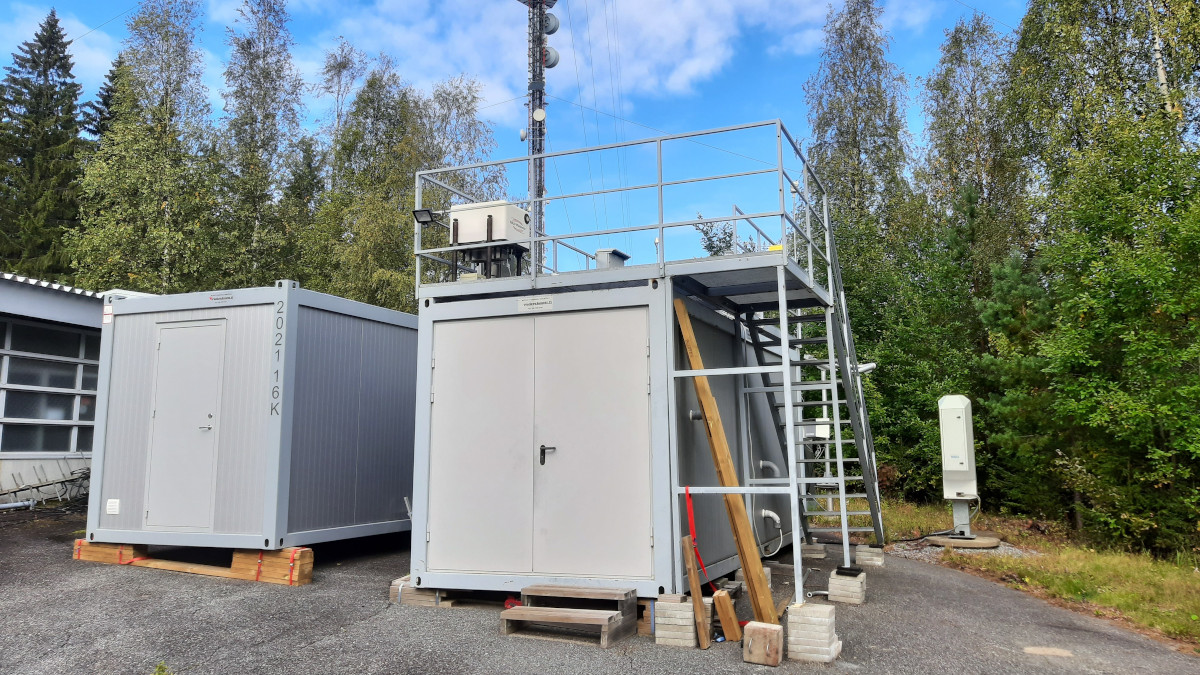Atmospheric measurements
The Atmospheric measurements group studies tropospheric aerosols and their interaction with cloud droplets by conducting long-term in-situ and Lidar measurements and targeted campaigns.
Continuous measurements are conducted at Puijo, Savilahti, and Vehmasmäki measurement stations in Kuopio. The measurements are part of EARLINET/ACTRIS and PollyNet networks. We also actively participate in international campaigns elsewhere in Finland and abroad. The group works in close collaboration with the aerosol research groups at the University of Eastern Finland.

Current research topics
Aerosol profiles and aerosol typing with lidars
Algorithm development for lidar retrievals (e.g. pollen typing)
Aerosol-cloud interactions
Atmospheric icing
Health effects of aerosols
Projects / Research highlight
Sharpening the image of the interplay between cloud top dynamics and microphysics (SHARPCLOUD)
The impacts of aerosol on cloud properties comprise one of the largest sources of uncertainty in estimates of anthropogenic climate change. The main cause for this is the buffered nature of the cloud systems. Also, representing the aerosol-cloud interactions in climate models is highly challenging due to the poor spatial resolution of the models. Here we propose a bottom-up approach to quantify how the interplay between entrainment mixing, radiation and microphysical processes modifies the cloud top properties, and how these changes penetrate through the cloud layer. We will employ novel holographic imaging methods, traditional instrumentation, and cutting edge aerosol-cloud-precipitation modelling tools for measuring cloud microphysical properties and their spatial variability down to a centimeter scale. This high accuracy will help us to understand the cloud top dynamics and microphysics better and to narrow the gap between satellite retrievals and current global scale modelling tools.
Aeroallergens and immunological preparedness for future climate scenarios: implications for public health promotion (ALL-IMPRESS)
Increase in pollen allergies, longer aeroallergen seasons and worsening of symptoms may be the first and the most significant health consequences of climate change in Finland, leading to substantial societal and economic burden. The project aims to produce, interpret and disseminate new knowledge and methodologies needed for the better forecasting of allergic disease burden in future climate scenarios. The ultimate goal is to evaluate and interpret the interconnection between climate change, aeroallergens and immunological preparedness and to translate findings into promotion of public health and societal adaptation.
Detailed measurement of cloud properties with a holographic microscope (PERHO)
We pilot holographic imaging for measuring the cloud droplet properties in-situ with high spatial and temporal resolution and cost efficiently. A holographic imaging sensor has already proven to work well in a fixed measurement setup, and now we will install a similar but miniaturized sensor on a miniature aircraft that is substantially easier to control and cheaper than traditional aircraft experiments. The new sensor will enable investigating the cloud properties during their whole lifetime, starting from the cloud formation at its bottom and ending up either to evaporation of the droplets at the cloud edges or rain formation. The method and the more accurate results can be exploited by institutes researching cloud microphysical properties in different atmospheric conditions for improving, for example, climate and weather forecasting models, visibility observations at airports, and icing forecasting for aviation and wind energy production.
People
email: firstname.lastname@fmi.fi
Mika Komppula, PhD, Adj. Prof., Senior Scientist, Head of Group
Maria Filioglou, PhD, Senior Scientist
Maria Gatou, MSc, Scientist
Eleni Giannakaki, PhD, Senior Scientist
Uula Isopahkala, MSc, Scientist
Ari Leskinen, PhD, Adj. Prof., Senior Scientist
Xiaoxia Shang, PhD, Senior Scientist
Recent science news from the group
Spaceborne lidars are the best tool to monitor long-range-transported smoke
Allergic to pollen? Scientists set the base to detect airborne pollen
Holograms can be used for precise depictions of cloud droplets
